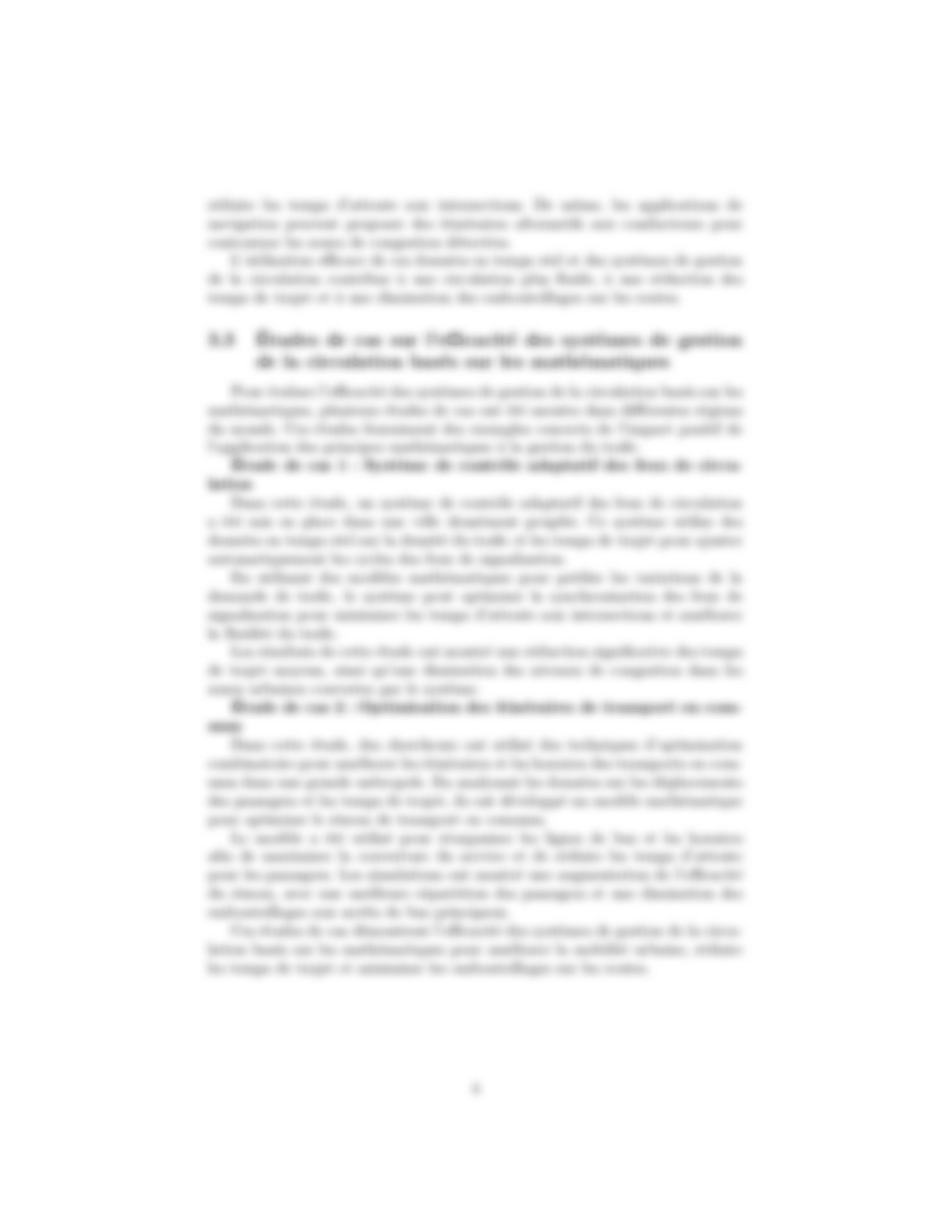Viral News | Explore around Viral and popular News this year
Embouteillages Au Canada : Causes, Conséquences Et Solutions
Embouteillages Au Canada : Causes, Conséquences Et Solutions
— a pressing issue that needs immediate attention.
Editor's Note: Embouteillages Au Canada: Causes, Conséquences Et Solutions published on
[date]
. Traffic congestion has reached alarming levels in Canada, significantly impacting our economy, environment, and quality of life. This guide aims to shed light on the causes, consequences, and potential solutions to tackle this growing problem.
Through extensive analysis and research, we have compiled this comprehensive guide to assist individuals and decision-makers in understanding the complexities of traffic congestion and identifying effective strategies to mitigate its adverse effects.
Key Takeaways
:
| Causes | Consequences | Solutions |
|---|---|---|
|
- Population growth and urbanization - Inadequate transportation infrastructure - Automobile dependency |
- Economic losses due to delays - Increased air pollution - Reduced quality of life |
- Invest in public transportation - Improve urban planning - Encourage ride-sharing and carpooling |
Transition to main article topics:
1. Causes of Traffic Congestion in Canada
2. Consequences of Traffic Congestion in Canada
3. Solutions to Address Traffic Congestion in Canada
Conclusion:
Addressing traffic congestion requires a comprehensive approach. Through collaboration between governments, businesses, and individuals, we can implement innovative solutions to improve our transportation systems and enhance the overall well-being of our communities.
Additional Resources:
- [Link to Canadian Urban Transit Association website]
- [Link to Transport Canada website]
FAQ
This FAQ section provides detailed answers to commonly asked questions and addresses misconceptions regarding traffic congestion in Canada.

Embouteillages à Dakar : Les usagers dénoncent leur calvaire et s - Source www.dakaractu.com
Question 1: What are the primary causes of traffic congestion in Canada?
Urbanization, population growth, inadequate infrastructure, and increased reliance on personal vehicles are significant contributors to traffic congestion in Canada.
Question 2: How does traffic congestion impact the Canadian economy?
Congestion leads to reduced productivity, increased transportation costs, and delays in the delivery of goods and services, resulting in economic losses.
Question 3: What are the long-term consequences of unresolved traffic congestion?
Prolonged congestion can have detrimental effects on urban planning, environmental sustainability, and quality of life.
Question 4: What measures can be taken to address traffic congestion?
Implementing congestion pricing, promoting public transportation, optimizing road infrastructure, and encouraging alternative modes of transportation are effective strategies to mitigate congestion.
Question 5: What role can technology play in managing traffic congestion?
Traffic management systems, real-time traffic information, and ride-sharing platforms can improve traffic flow and reduce congestion.
Question 6: Is there a comprehensive solution to traffic congestion?
Addressing traffic congestion requires a multifaceted approach that involves collaboration among policymakers, transportation authorities, urban planners, and the public.
Congestion management is an ongoing challenge in Canada, and effective solutions require continuous research, innovation, and investments.
Tips to Mitigate Traffic Congestion in Canada
Traffic congestion is a persistent problem in many major cities across Canada. It not only wastes time but also negatively impacts the environment and the economy. Here are some tips to help alleviate traffic congestion and its associated consequences:

Peut-on éviter les embouteillages grâce aux mathématiques ? - Grand - Source grand-oral-maths.com
Tip 1: Promote Public Transportation
Encourage the use of public transportation systems, such as buses, subways, and trains, by making them affordable, accessible, and reliable. This reduces the number of cars on the road, easing congestion.
Tip 2: Implement Intelligent Traffic Management Systems
Utilize advanced technologies to monitor and control traffic flow in real-time. These systems can adjust traffic signals, provide real-time traffic information, and optimize vehicle routing, reducing delays and improving overall efficiency.
Tip 3: Encourage Carpooling and Ride-Sharing
Promote carpooling and ride-sharing programs to reduce the number of single-occupancy vehicles. Incentives, such as dedicated carpool lanes and reduced parking fees, can encourage commuters to share rides.
Tip 4: Implement Congestion Pricing
Consider implementing congestion pricing during peak hours to discourage driving during these times. This can help shift traffic patterns and encourage the use of alternative modes of transportation.
Tip 5: Promote Telecommuting and Flexible Work Arrangements
Encourage employers to offer telecommuting and flexible work arrangements to reduce the number of commuters during peak hours. This allows employees to work from home or at flexible times, reducing traffic congestion.
Tip 6: Invest in Infrastructure Improvements
Invest in infrastructure improvements, such as expanding highways, adding public transportation lines, and improving road networks. This can increase capacity and reduce bottlenecks, easing traffic flow.
Tip 7: Educate the Public
Conduct public education campaigns to raise awareness about the causes and consequences of traffic congestion. Encourage responsible driving habits and promote alternative transportation options to reduce the overall demand for road space.
By implementing these tips, Canadian cities can effectively mitigate traffic congestion and its associated impacts, improving air quality, reducing travel times, and boosting economic productivity. For a more comprehensive analysis, refer to the article Embouteillages Au Canada : Causes, Conséquences Et Solutions.
Traffic Congestion in Canada: Causes, Impacts, and Solutions
Traffic congestion is a significant issue in Canada, leading to adverse consequences and posing challenges to urban planning and transportation systems.
-

Ces embouteillages au sommet de l’Everest ont causé plusieurs morts - Source www.bfmtv.comCommuting patterns: Increased population density and suburbanization
- Infrastructure limitations: Inadequate road capacity and public transit options
- Vehicle ownership: High reliance on personal vehicles and limited alternative transportation modes
- Economic growth: Increased economic activity and urban development
- Inefficient traffic management: Lack of coordination and intelligent transportation systems
- Environmental impacts: Air pollution, greenhouse gas emissions, and increased fuel consumption
Addressing traffic congestion requires a comprehensive approach involving long-term planning, infrastructure investment, and innovative solutions. Implementing smart traffic management systems, promoting public transit and active transportation, optimizing commuting patterns, and encouraging sustainable urban development are essential for mitigating this issue and improving the overall livability and efficiency of Canadian cities.
Embouteillages Au Canada : Causes, Conséquences Et Solutions
The issue of traffic congestion in Canada has been steadily gaining attention, with a multitude of causes, consequences, and potential solutions. understanding this complex topic requires an examination of the various factors that contribute to traffic congestion, the impact it has on individuals, society, and the economy, and the strategies that can be implemented to mitigate its effects. By exploring the connection between these elements, we gain a deeper appreciation for the challenges posed by traffic congestion in Canada and the importance of addressing them.

Conséquences des fortes pluies de ce vendredi : Des embouteillages - Source www.dakaractu.com
The causes of traffic congestion in Canada are multifaceted. Urbanization and population growth have led to an increase in the number of vehicles on the roads, exacerbating congestion during peak hours and in densely populated areas. Inadequate transportation infrastructure, such as limited public transportation options, further contributes to traffic congestion. Additionally, factors such as road accidents, construction projects, and special events can cause temporary disruptions to traffic flow.
The consequences of traffic congestion are far-reaching. for individuals, it can lead to increased commute times, stress, and frustration. Reduced productivity, as well as increased fuel consumption and carbon emissions, are significant economic consequences. Furthermore, traffic congestion can negatively impact air and noise pollution levels, affecting the health and well-being of urban residents.
Addressing traffic congestion in Canada requires a comprehensive approach that involves both short-term and long-term solutions. Governments, transportation authorities, and urban planners play a key role in implementing strategies such as improving public transportation, investing in infrastructure, and promoting carpooling and ride-sharing. Technological advancements, including intelligent traffic management systems and autonomous vehicles, hold promise for further reducing congestion. Additionally, encouraging alternative modes of transportation, such as cycling, public transit, and walking, can help reduce the number of vehicles on the roads.
Conclusion
Traffic congestion in Canada is a complex issue with a range of causes, consequences, and potential solutions. Understanding the connections between these elements is crucial for developing and implementing effective strategies to mitigate its effects. By addressing the root causes, such as urbanization, inadequate infrastructure, and reliance on private vehicles, we can work towards reducing traffic congestion and its associated negative impacts.
Collaboration among governments. transportation authorities, urban planners, and the public is essential for finding sustainable solutions to traffic congestion. Embracing innovative technologies, promoting alternative modes of transportation, and investing in infrastructure are key steps towards creating a more efficient and congestion-free transportation system. ultimately, the goal is to ensure that Canada's transportation networks support economic growth, enhance quality of life, and contribute to a more sustainable future.